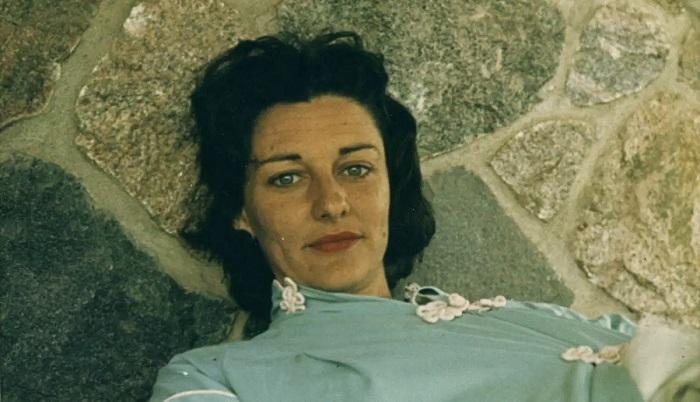What Symbolism Frequently Appears in Anne Sexton's Poetry?

Anne Sexton is one of the most influential confessional poets of the twentieth century. Her poetry often delves into personal experiences, mental health struggles, and complex emotions. Sexton uses symbolism to convey deep psychological truths. She does not just tell a story; she paints a vivid emotional landscape. Her symbols are drawn from daily life, mythology, nature, and cultural references. By examining the symbolism in Sexton’s work, readers gain insight into her inner world and her artistic intentions. This article explores the recurring symbols in Anne Sexton's poetry and their significance.
Nature as a Mirror of Emotion
Seasons and Weather
Anne Sexton frequently uses seasons and weather to symbolize emotional states. Winter often represents isolation, depression, or death. In contrast, spring may symbolize renewal, hope, or fleeting happiness. Storms, rain, and wind frequently appear to reflect inner turmoil. Sexton’s attention to natural imagery allows readers to feel her psychological states. The external environment mirrors her internal landscape, creating a strong emotional connection with the reader.
Flowers and Plants
Floral imagery is another common symbolic device in Sexton’s poetry. Flowers often represent beauty, fragility, or fleeting moments of life. Roses may symbolize love or desire but also carry thorns, suggesting pain or danger. Wildflowers often appear as symbols of freedom or untamed emotion. Sexton’s use of plants provides layers of meaning. Through flowers and plants, she explores human vulnerability and the transient nature of experience.
The Body and Physical Imagery
Human Anatomy
Anne Sexton often uses the human body as a symbolic landscape. Eyes, hands, and other body parts appear to convey emotional or psychological states. The body becomes a site of conflict, pleasure, and suffering. This physical symbolism emphasizes the intensity of personal experience in her poetry. By focusing on the body, Sexton connects universal human experiences to her individual perspective.
Illness and Pain
Illness, scars, and injuries often symbolize deeper emotional or spiritual suffering in Sexton’s work. Mental health struggles, especially depression, are frequently depicted through physical metaphors. These symbols allow Sexton to make abstract experiences concrete. The body becomes a vessel for expressing trauma and vulnerability. Readers see the intersection of physical reality and emotional truth in her poetry.
Domestic Objects and Everyday Life
Household Items
Anne Sexton often turns mundane objects into symbols. Chairs, mirrors, and windows can carry layers of meaning. Mirrors, for example, symbolize self-reflection, identity, or inner conflict. Chairs may indicate waiting, loneliness, or stagnation. Everyday objects become charged with emotional and psychological significance. Sexton elevates the ordinary to explore extraordinary emotional truths.
Clothing and Appearance
Clothing, hairstyles, and makeup frequently appear as symbols in Sexton’s poetry. These items often reflect identity, societal expectations, or personal transformation. A dress might symbolize femininity, societal pressure, or vulnerability. By using these symbols, Sexton critiques social norms while revealing personal struggles. Clothing becomes a metaphor for both concealment and expression of the self.
Mythology and Cultural References
Classical Mythology
Anne Sexton often draws on classical mythology to symbolize universal themes. Figures from Greek and Roman myths appear to explore love, death, power, and suffering. For example, Sexton reinterprets myths of women such as Persephone or Medea to reflect personal and feminist concerns. These mythological references deepen the symbolic resonance of her poetry. They connect personal experience to larger cultural narratives.
Modern Culture
In addition to mythology, Sexton incorporates contemporary cultural symbols. References to movies, television, and popular figures appear in her work. These symbols reflect societal pressures, identity, and the complexities of modern life. Sexton’s use of modern culture creates immediacy and relatability. She blends the mythic and the contemporary to highlight both timeless and current struggles.
Death and the Afterlife
Mortality as a Symbol
Death is a recurring symbol in Anne Sexton’s poetry. It often represents the inevitability of life’s end, emotional pain, or personal transformation. Death may appear literally or metaphorically, reflecting inner conflict or despair. Sexton’s treatment of mortality is both intimate and universal. She examines the human condition with honesty and intensity.
Graves, Coffins, and Funerals
Graves, coffins, and funeral imagery frequently appear in Sexton’s work. These symbols often reflect societal conventions, personal fears, or the finality of life. They serve as reminders of mortality and the fragility of existence. By exploring these symbols, Sexton addresses both personal suffering and broader human experiences. Readers confront mortality alongside the poet.
Sexuality and Relationships
Erotic Imagery
Anne Sexton often uses sexual symbolism to explore desire, intimacy, and personal identity. Erotic images are both literal and metaphorical. They frequently symbolize connection, power dynamics, or emotional vulnerability. Sexton’s use of sexual symbolism is candid and complex. It conveys human longing while revealing the poet’s personal struggles.
Love and Loss
Romantic relationships also appear symbolically in Sexton’s poetry. Partners, lovers, or absent figures often represent longing, rejection, or emotional dependency. These symbols examine the complexities of human connection. Sexton portrays love as both sustaining and painful, reflecting the duality of personal experience.
Conclusion
Anne Sexton’s poetry is rich with symbolism that illuminates her inner life and creative vision. Nature, the human body, domestic objects, mythology, death, and sexuality all serve as recurring symbols. These symbols transform ordinary experiences into profound reflections on emotion, identity, and mortality. By studying the symbolic patterns in her work, readers gain insight into her psychological and artistic depth. Sexton’s use of symbolism allows her to explore universal themes while remaining intensely personal. The enduring power of her poetry lies in this ability to merge vivid imagery with complex emotional truth. Understanding these symbolic elements is essential to appreciating the full impact of Anne Sexton’s literary contribution.
- Art
- Causes
- Crafts
- Dance
- Drinks
- Film
- Fitness
- Food
- Jogos
- Gardening
- Health
- Início
- Literature
- Music
- Networking
- Outro
- Party
- Religion
- Shopping
- Sports
- Theater
- Wellness



